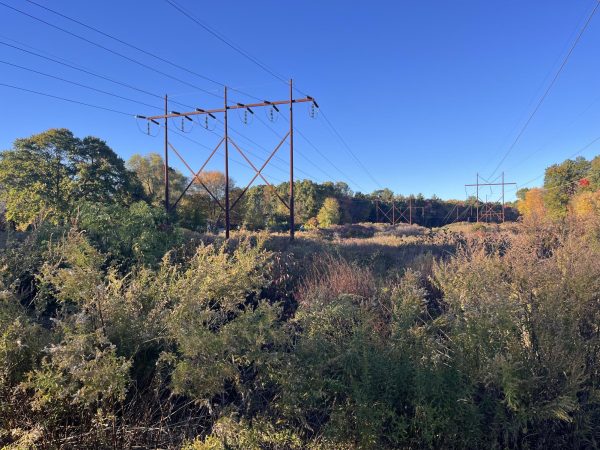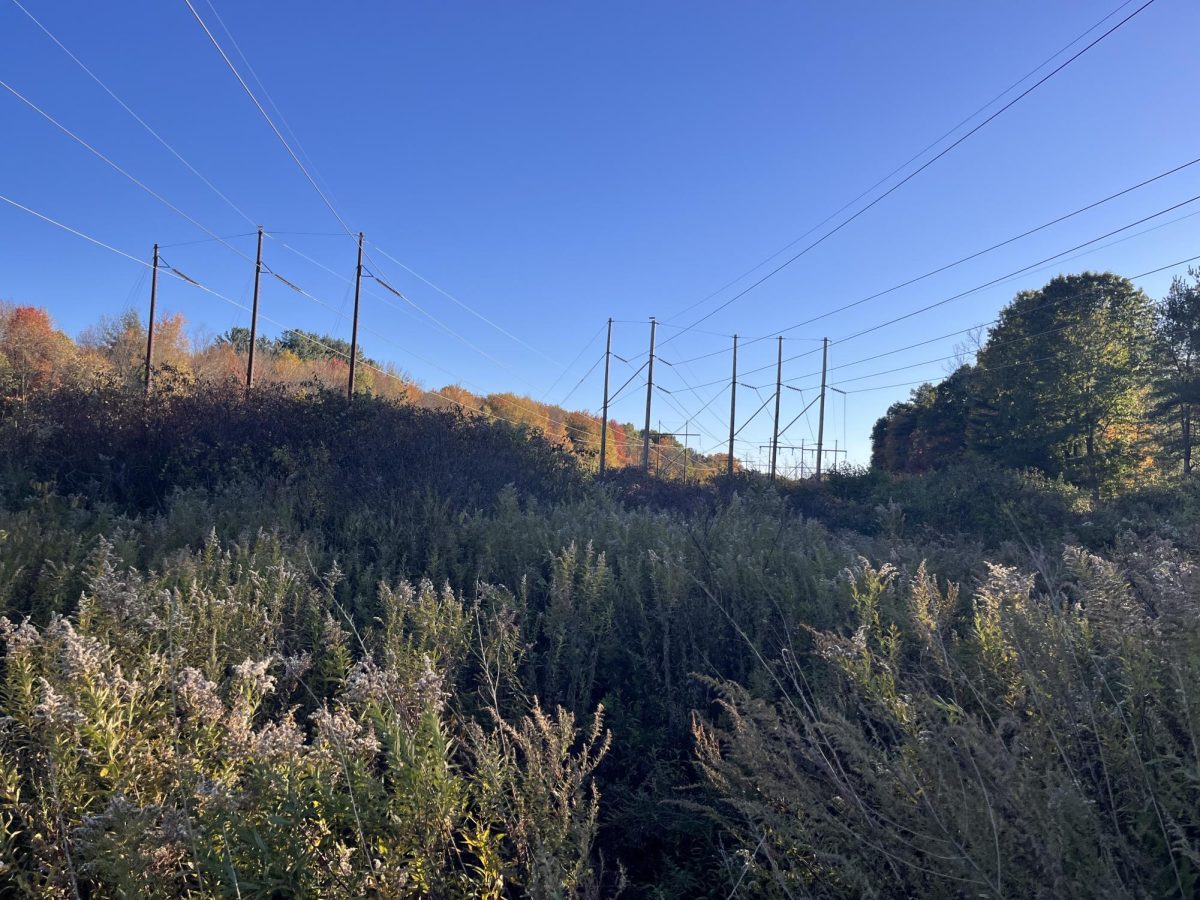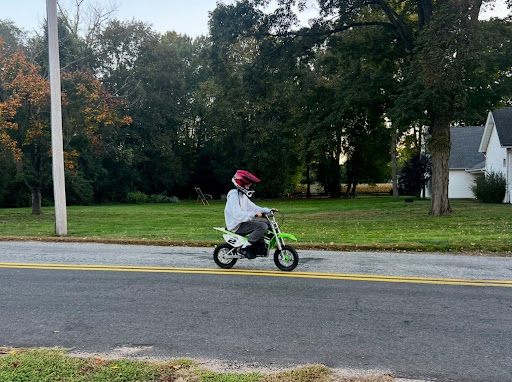Japanese knotweed is an invasive species that thrives and expands rapidly in wetland areas. It has recently gained attention in South Windsor as the proposed development area at 100 Oakland Rd is overrun with the knotweed plant, causing problems for both developers and the natural wetland ecosystem.
Japanese knotweed, also known as polygonum cuspidatum, is an herbaceous plant native to Asia, making its way to the United States in the late 1800s. Knotweed was originally cultivated in the US as an ornamental plant, grown for decorative purposes. It has no natural predators in South Windsor, which has allowed it to become invasive in nature.
According to the National Park Service, Japanese knotweed is distinguished by dark green leaves, and stems that develop an orange hue. Knotweed stalks also produce small white flowers that blossom towards the end of the summer.
An identifying quality of Japanese knotweed is its ability to rapidly spread, which can be attributed to its rhizomes. Rhizomes are underground shoots that grow horizontally, sprouting lateral shoots as the root progresses. This underground root system is responsible for the rapid growth of the knotweed plant, as it enables the original plant to create a network of additional sprouts.
Rhizomes also allow knotweed to resprout every year. Knotweed stalks and leaves die around the time of the first frost, but their underground system of roots allows for regrowth as weather becomes warmer, making it a perennial plant.
“Knotweed spreads all on the ground, it keeps sending out shoots that go into the ground, and dehydrating the land,” Jim Newbury, applicant of The Estates at 100 Oakland Rd, told The Prowl.
The presence of rhizomes allows knotweed to not only expand, but to damage surrounding infrastructure in the process.

According to a UK-based organization that specializes in treating and removing knotweed, “Because of this rhizome system, herbicides are only capable of controlling and slowing down knotweed. In fact, knotweed roots can create new plant growth to re-emerge for up to 20 years, especially if the ground is disturbed. As the underground roots grow, they exploit cracks, mortar joints and other weak areas in buildings or hard surfaces.”
The underground movement of knotweed is part of what makes it so difficult to control, and also what makes it so harmful to the foundations of homes and buildings.
Various methods of treatment for knotweed exist, but with varying levels of success. Vincent Stetson, Director of Public Works for South Windsor, and member of the South Windsor Invasive Plants Working Group, explained the local methods of knotweed maintenance.
“Currently, South Windsor is utilizing a wire mesh method, where mesh with one-inch spacing is stapled to the ground. This technique allows knotweed to grow through the mesh and eventually girdle itself, which kills the plant. At the same time, native plants are given the opportunity to grow alongside and begin reestablishing themselves,” Vincent Stetson told The Prowl.
While local treatments are being implemented, the presence of knotweed in South Windsor is still causing major issues for the natural wetland currently located at 100 Oakland Rd.
Aside from rhizomes, knotweed is also able to distribute sprouts by spreading material from roots or stems through water. This specific ability of knotweed is what makes it dangerous to wetland environments, because the distribution of sprouts via water networks absorbs large quantities of water, effectively draining the wetland.
The lack of natural predators for knotweed in South Windsor has allowed for its rapid expansion, and, in the development area, the knotweed has had a significant drying effect, consuming large amounts of water.
To remedy this issue, Newbury plans to lower the ground level and then flood the area. His hope is that this method will remove the existing knotweed by digging out the area, and allow for the reintroduction of wetland pollinators by manufacturing a wetland through flooding.
While Japanese knotweed is having a significant impact locally, its scale is not limited to South Windsor, or even Connecticut. Proper methods for treating and removing knotweed still have room for development, and with the risk knotweed poses to ecosystems around the world, containing the spread of this invasive species has become a pressing concern.











